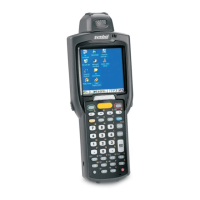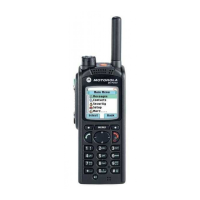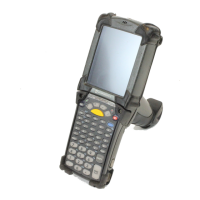vii
Safety and General Information
IMPORTANT INFORMATION ON SAFE AND EFFICIENT OPERATION.
READ THIS INFORMATION BEFORE USING YOUR IRRInet-XL Terminal.
Avoid risk of fire by only using fuses of the specified type and rating. For fuse replacement refer to qualified persons.
Avoid electric shock from this equipment by supplying power from a properly grounded outlet.
Prevent electric shock by always disconnecting the power line before servicing the equipment.
This equipment does not have any user-serviceable parts. Do not remove panels or attempt to service this equipment
unless you are instructed to do so.
Electromagnetic Interference / Compatibility
The installer must make sure that the radio connected to the system has all required approvals. The installation must meet
the requirements of the standard.
This equipment was tested with cables 3 meters in length for indoor installation. If longer cables and/or cabinets for
outdoor installation are used, the installer is responsible for making sure that the installation complies with the requirements
of the standard.
The product is a radio accessory.
Medical Devices
Pacemakers
The Health Industry Manufacturers Association recommends that a minimum separation of 15 centimetres be maintained
between a terminal and a pacemaker. These recommendations are consistent with the independent research by, and
recommendations of, Wireless Technology Research.
Persons with pacemakers should:
ALWAYS keep the terminal more than 15 centimetres from their pacemaker when the IRRInet-XL is turned ON.
Hearing Aids
Some terminals may interfere with some hearing aids. In the event of such interference you may want to consult your
hearing aid manufacturer to discuss alternatives.
Other Medical Devices
If you use any other personal medical device, consult the manufacturer of your device to determine if it is adequately
shielded from RF energy. Your physician may be able to assist you in obtaining this information.
Antennas
Do not use any terminal that has a damaged antenna. If a damaged antenna comes into contact with your skin, a minor
burn can result.
The antenna installation must comply with the following requirements in order to assure optimal performance and make
sure human exposure to radio frequency electromagnetic energy is within the guidelines set forth in the above standards:
The antenna must be mounted outside the building
Mount the antenna on a tower if at all possible
If the antenna is to be mounted on a building then it must be mounted on the roof.
As with all fixed site antenna installations, it is the responsibility of the licensee to manage the site in accordance with
applicable regulatory requirements and may require additional compliance actions such as site survey measurements,
signage, and site access restrictions in order to insure that exposure limits are not exceeded.
Batteries
All batteries can cause property damage and/or bodily injury such as burns if a conductive material such as jewellery, keys,
or beaded chains touch exposed terminals. The conductive material may complete an electrical circuit (short circuit) and
become quite hot. Exercise care in handling any charged battery, particularly when placing it inside a pocket, purse, or
other container with metal objects.
Battery Disposal
For environmental protection used batteries should be disposed of properly for recycling. Never dispose of a battery on a
fire as it may explode.
COPYRIGHT
Copyright © 1999- 2001 Motorola Inc. All rights reserved. No part of this manual may be reproduced, transmitted, stored in
a retrieval system, or translated into any language or computer language, in any form or by any means, without the prior
written permission of Motorola Inc.
TRADEMARKS: Motorola and a are trademarks of Motorola Inc.

